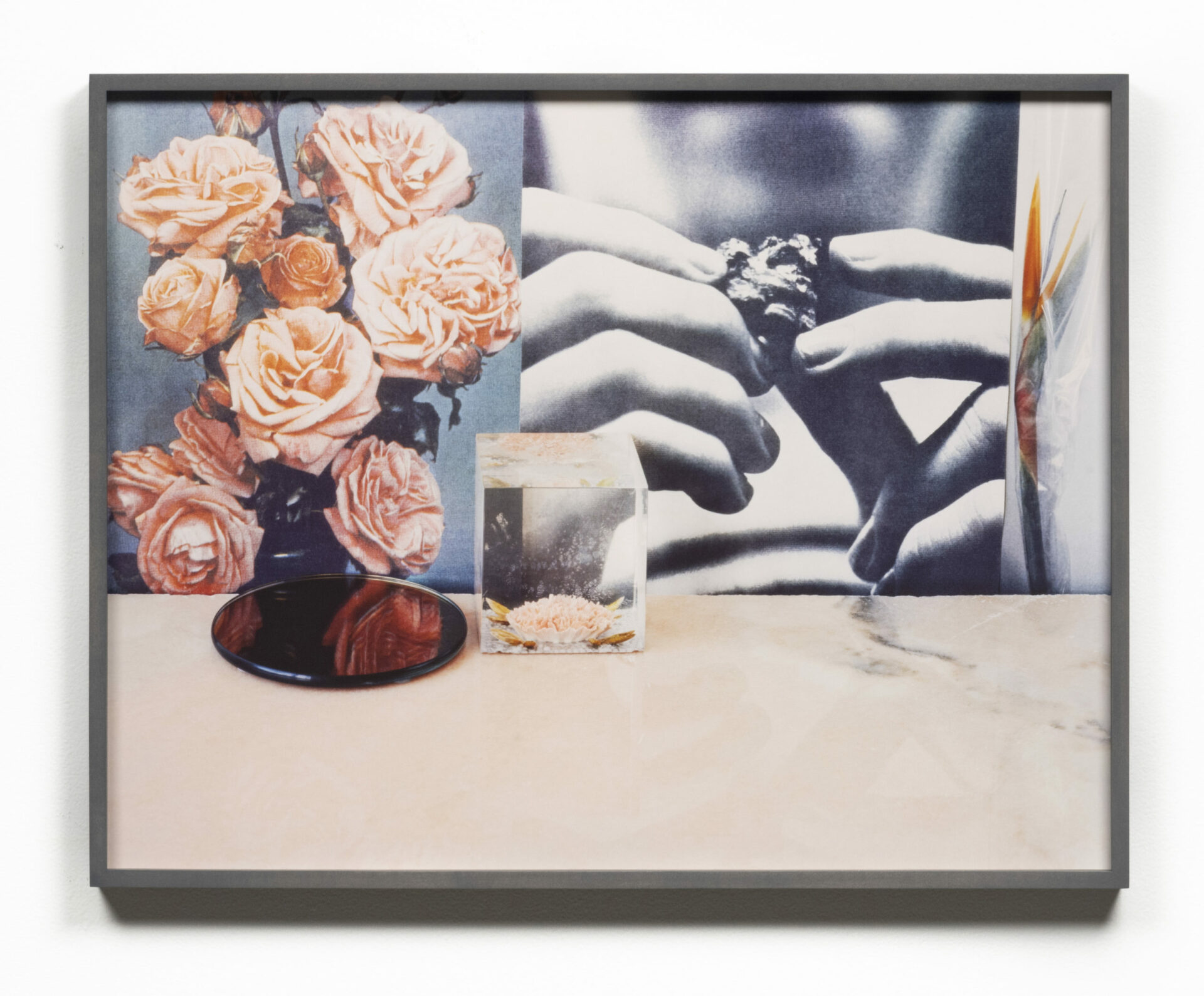
photo : André Morin, courtesy of Robert Kusmirowski & Foksal Gallery Foundation, Varsovie, and courtesy of Tom Friedman & Gagosian Gallery, New York, Galerie Bernard Ceysson, Paris & Gallery Tomio Koyama, Kyoto
[En anglais]
While driving a pristine New Jersey turnpike in absolute darkness, Tony Smith had an aesthetic epiphany. Unfinished and without streetlights, railings or markers, the dark pavement flowed freely through the abyss. In Chasing Napoleon, Smith’s sculpture For V.T. (1969), a solid black low-lying rhombohedron, functions as a metaphor for the irrational — a bounded unknown. Whatever art historical lineage Smith’s work answers to is beside the point; this is an exhibition about the sublime potential of individual experience, touching on the aesthetics of terror. A quote from Don DeLillo’s 1991 novel Mao II appears at the entrance: “You’re not the hermit, the woodsman-writer, you’re not the crank with native vision, you’re the hunted man.” Directed at the novel’s protagonist, hermetic writer Bill Gray, it sums up the paradox at the heart of this exhibition: isolation is in equal parts freedom and oppression.
Chasing Napoleon brings together eighteen artists whose works, according to Marc-Olivier Wahler’s curatorial statement, “also read as instruction manuals on how to withdraw into seclusion and take refuge in the limits of the visible.” Theodore Kaczynski, also known as the Unabomber, casts a long shadow here, featured in works by five of the artists. Replication predominates: Robert Kusmirowski’s Unacabine (2008) is a life-sized copy of Kaczynski’s remote Montana dwelling; Dora Winter amassed titles from his personal library to create The Unabomber’s Collection of Books (2008-09); and Ola Pehrson remade 187 newspaper articles and photographs by hand to reconstruct the documentary film The Hunt of The Unabomber (1998). The visuality of terrorism has prompted an active dialogue on the relationship between contemporary art and violence, described by theorist Boris Groys as “more than ambivalent.”1 1 - Art Power [Cambridge: MIT Press, 2008], 123. In Chasing Napoleon this ambivalence comes across through notes of tenderness towards Kaczynski: the remake as homage. These romantic undertones make for a resolutely aesthetic exhibition, and given its subject matter, one markedly apolitical.
Several works isolate viewers physically, destabilizing the gallery space. Micol Assaël’s Vorkuta (2001), a -30˚C chamber resembling an arctic research station, comes replete with parkas to don before entering. Still the cold hits you like a negative fog, a void of heat — you feel it working its way out of you long after exiting. Christoph Büchel’s Spider Hole (2006), a diminutive dirt abyss based on Saddam Hussein’s final hiding spot, offers a likewise uncomfortable, if novel experience. In an otherwise dark and empty room, Ryan Gander’s Nathaniel Knows (2003-09), exposes a glowing “secret garden” through a tiny hole burrowed into the wall. All three yield a gentle, melancholic threat.

photo : André Morin, courtesy Galerie Mehdi Chouakri, Berlin
These dynamic environments are supported by a selection of minimalist works with which they share a sense of secrecy. Charlotte Posenenske’s Vierkantrohre (Square Tube) series (1967-2007) consists of galvanized steel sheets in the shape of ventilation ducts that hug the gallery walls, incognito. Even more easily passed over is Robert Gober’s Drain (1989), a handcrafted industrial form, 11 cm across, perforating the gallery wall. Though minute, its obvious uselessness creates apprehension. Passing further into oblivion, Tom Friedman’s Untitled (A Curse) (1992) is simply an empty plinth with an invisible black-magical referent. These works create an uncanny sense of surveillance — fitting given the paranoia solitude lends itself to.
An extended series of large oil and acrylic paintings by Paul Laffoley demands the most time and attention from viewers. Laffoley sees his paintings as functioning systems, and works like Temporality: the Great Within of the Universe (1974) read as complex instructions for time travel and transcendence. His paintings are the closest thing here to a belief system, but they are extraordinarily muddled: new-age philosophies, Eastern mysticism, the paranormal, and the cosmic. Though much more singular in focus, Dieter Roth’s Reykjavík Slides (1970-75, 1990-95), likewise provide a mechanism through which to order the world. Roth has amassed over 33,000 images documenting every single house in the town of Reykjavík, in various weather conditions, a thorough but illogical knowledge. While his archival impulse has elsewhere been interpreted as affectionate, in this exhibition it evinces control.
The open concept and malleable art works of Chasing Napoleon are facilitated by the Palais de Tokyo’s mandate: to act as a laboratory in which art and life, and the instability of each, come together. One vehicle for this is the quarterly magazine Palais, which functions as an exhibition guide and supplement. In issue no. 10, the companion piece to Chasing Napoleon, longer texts feature American literary theorist François Specq on Henry David Thoreau’s Journal, sociologist of anarchy Ronald Creagh on the history of community-based experiments, and Laffoley himself on the metaphysical history of radio dramas. In 1995 the Unabomber held the FBI at ransom, threatening to continue killing unless his manifesto, “Industrial Society and Its Future,” was published in The New York Times. Palais introduces readers to his more innocuous prison cell penmanship with the social commentary fable “Ship of Fools.” Italso features an extensive list of recommended texts, films, and music, covering philosophy, documentary, instruction manuals, Hollywood cinema, and electro-house.
This far-ranging selection combined with well-equipped research stations, imbues the total Palais de Tokyo experience with hypertextuality — a nebula of connections to navigate through. The art works in Chasing Napoleon range from 1967 to 2009, but dates are almost entirely arbitrary; each work seems urgent and self-contained. This contrasts with the strongly intertextual tendency of most art-historically curated exhibitions, which highlight the influence of one work on the reading of another, and the mediation of objects through codes of display. The Palais de Tokyo encourages new approaches to knowledge in relation to contemporary art, which are exciting, subversive, and inclusive. Without posing a direct challenge, Chasing Napoleon troubles the conflation of artistic genius, divine inspiration, and anti-social behavior.




